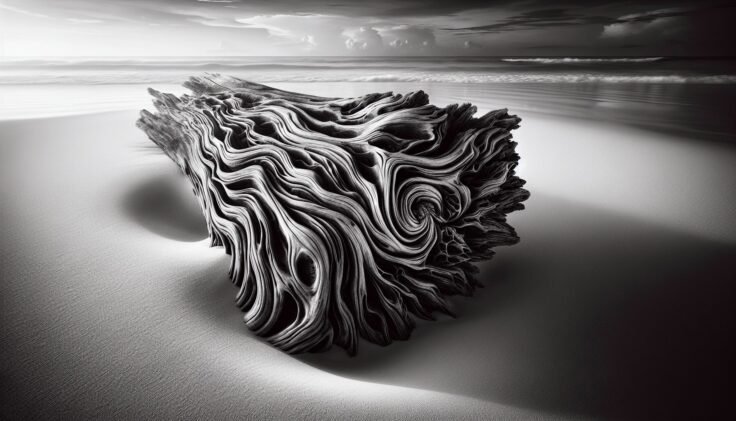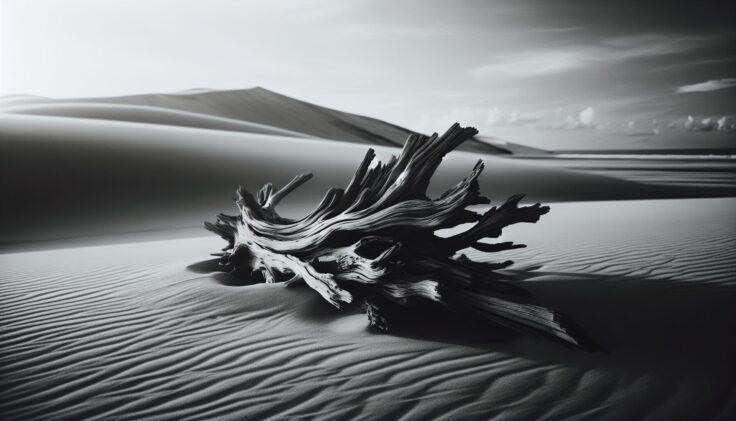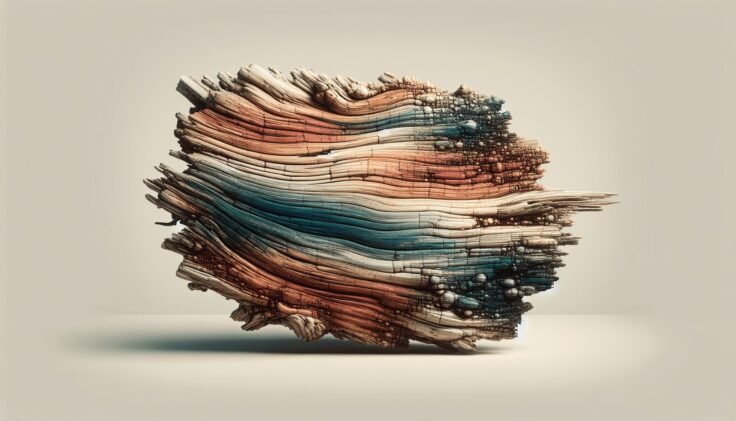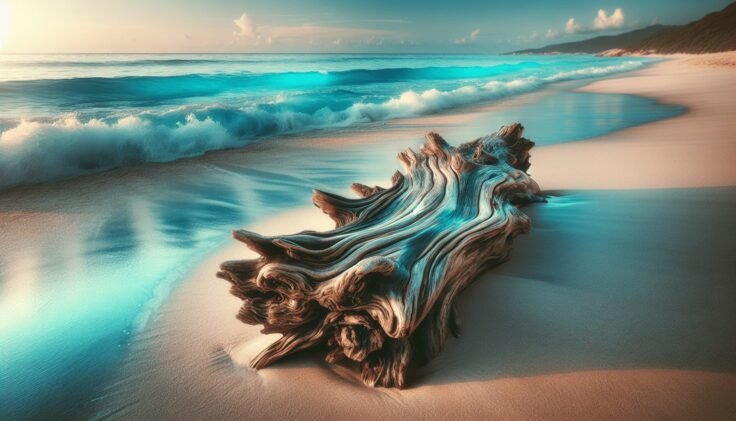Have you ever wondered how a simple change in color can transform a space? Paint isn’t just about color; it’s about creating an atmosphere, setting the mood, and expressing your personality. Today, let’s talk about BM Driftwood paint—a color that brings the rustic charm of nature into your home with a nuanced elegance.

Understanding BM Driftwood Paint
BM Driftwood is a particular shade from the Benjamin Moore collection, known for its subtle, earthy tones reminiscent of weathered wood you’d find by the sea. It is a versatile hue that can create a sense of calm and coziness in a room, while still offering a modern edge. If you’ve been considering adding a hint of nature to your interiors without overwhelming your space, BM Driftwood might just be the perfect pick.
Why Choose BM Driftwood?
If you’re torn between neutral and bold shades, Driftwood serves as a perfect middle ground. This particular color embodies the essence of natural wood, bringing a bit of the outdoors inside without shouting for attention. Its muted tones make it suitable for numerous design styles from coastal to modern farmhouse.
The Mood and Ambiance of Driftwood Paint
Colors have the power to influence your mood and perception of space. Driftwood captures the understated beauty of natural materials, infusing a sense of tranquility and softness. Imagine walking into a room that instantly calms you with its coastal breeze-like effect—Driftwood achieves this by counterbalancing modern austerity with natural warmth.
Decoding the Color: Driftwood’s Place in the Color Spectrum
BM Driftwood sits comfortably in the realm of soft, muted grays with a hint of brown undertone. It’s these undercurrents that give it the aged timber appearance, making it not too cool and not too warm.
How Does Driftwood Compare to Other Shades?
To give you a better understanding, consider using a comparison table with other popular neutral hues:
| Paint Color | Undertone | Warmth/Coolness | Vibe |
|---|---|---|---|
| BM Driftwood | Gray/Brown | Balanced | Rustic, Natural |
| BM Revere Pewter | Gray/Beige | Warm | Cozy, Versatile |
| BM Gray Owl | Green/Blue | Cool | Fresh, Contemporary |
| BM Edgecomb Gray | Beige/Gray | Warm | Balanced, Subtle |
As you see, Driftwood maintains neutrality while exuding a touch of rustic warmth, setting itself apart as a unique yet accommodating choice for various settings.
Room Applications for BM Driftwood
Where exactly can you apply BM Driftwood to make the most of its beauty? Let’s explore its suitability across different rooms.
Living Room
A living room adorned in Driftwood shade becomes a warm gathering oasis. Whether your interiors include contemporary art or a mixture of vintage furnishings, Driftwood serves as a perfect backdrop, allowing different elements to shine while maintaining cohesion.
Bedroom
In the bedroom, BM Driftwood can promote restful sleep with its soothing undertones. Pair it with soft textiles and muted tones for a serene, inviting sanctuary.
Kitchen
Introducing Driftwood into a kitchen can create a seamless blend between cabinetry and walls, especially when complemented by white or off-white accents. It can also harmonize beautifully with wooden kitchenware, enhancing the rustic charm.
Bathroom
Capture the spa-like ambiance in your bathroom by using BM Driftwood. It works well with white fixtures and natural textiles like linen, creating a peaceful retreat for your daily rituals.
Entryways and Hallways
Set a welcoming tone right at the entrance. Driftwood can subtly introduce guests to your warm and cozy home, creating an inviting, homely atmosphere without overwhelming the senses.
Pairing BM Driftwood in Your Decor
Choosing the right pairings for BM Driftwood is crucial to achieving a coherent and inviting decor. Understanding how to balance this natural, rustic shade with complementary colors and materials will enhance your space effectively.
Complementary Colors
Consider using the following palette for visually appealing combinations:
- Off-White: Keep the look airy and fresh with simple off-white accents.
- Navy Blue: Add depth and sophistication by introducing navy elements through upholstery or accessories.
- Earthy Greens: Enhance the natural feel with emerald or sage green.
Furniture and Fabrics
When it comes to furniture and fabric, natural materials tend to pair harmoniously with Driftwood. Look for reclaimed wood, organic fibers, and minimalist design pieces that complement its understated elegance.
Accessories and Finishes
You can play with textures to add interest. Incorporate knitted throws, rustic metal accents, or even driftwood-inspired accessories to resonate with the paint. A mix of matte and gloss finishes also provides a dynamic balance.

Tips for Painting with BM Driftwood
Before grabbing that paintbrush, here are some tips to ensure the best results with BM Driftwood.
Preparation is Key
Ensure your surface is clean and primed to achieve an even coat. Driftwood’s undertone is versatile, but it appears best over a white or pale base coat.
Test with Samples
Before committing, use paint samples to test Driftwood under various lighting conditions. Natural and artificial lights can alter perception, and this helps confirm your choice in both daytime and nighttime environments.
Appropriate Paint Finish
Choosing the right finish can affect how the color appears. Consider satin or eggshell finishes for a soft sheen that complements Driftwood’s muted beauty.
Consistent Application
Using quality brushes or rollers is recommended for a consistent application. Paint in a methodical pattern, allowing each layer to dry thoroughly before reapplying.
The Impact of Lighting on Driftwood Paint
Lighting plays a significant role in how a paint color is perceived. Knowing how BM Driftwood interacts with different lighting conditions can help you optimize its appearance.
Natural Light
In rooms with ample natural light, Driftwood may appear lighter with more pronounced gray tones. This is where you’ll witness its capability to evoke a sense of openness or expand perceived areas.
Artificial Light
Under artificial lighting, particularly warm LED lights, Driftwood takes on a cozy depth, enhancing its brown undertones and making a space feel intimate yet modern.
Evening Transformations
As the sun sets, Driftwood can transform from a calm, neutral backdrop during the day into a cozy, warm setting at dusk, showcasing its versatility in maintaining charm around the clock.
Frequently Asked Questions about BM Driftwood Paint
When contemplating Driftwood as your next painting project, you might have some questions. Let’s clarify a few common queries.
Is BM Driftwood a Good Color for Small Spaces?
Yes, Driftwood’s neutral nature doesn’t overwhelm small spaces. Instead, its ability to bounce light can create the illusion of extra square footage, especially if paired with lighter furnishings or mirrors.
Can BM Driftwood Be Paired with Bold Hues?
Absolutely. Driftwood’s neutrality is the perfect canvas for bold accents. Whether it’s a fiery red or a vibrant teal, such colors pop against the subtlety of Driftwood’s tones.
How Does BM Driftwood Hold Up Over Time?
Driftwood, being a high-quality paint from Benjamin Moore, offers durability. Its lightfastness means decay or considerable fading over time is minimal, maintaining vibrancy and appeal through the years.
What Makes BM Driftwood Eco-Friendly?
Benjamin Moore prides itself on producing paints with low Volatile Organic Compounds (VOCs). This means using Driftwood contributes not only to a healthier indoor environment but also supports eco-friendly initiatives.
Conclusion
BM Driftwood Paint is more than just a color; it’s a versatile complement to your home decor, instilling spaces with a harmonious blend of calm and sophistication. Whether you’re updating a single room or revamping your entire home, Driftwood offers the flexibility and aesthetic appeal desired in modern interior design. From living rooms to hallways, its earthy warmth can enrich your environment in countless ways.
Reflect on the ambiance you wish to create and let Driftwood be your starting point for a transformation that doesn’t just paint a wall, but paints a feeling—a testament to the power and promise of this exceptional hue.

















